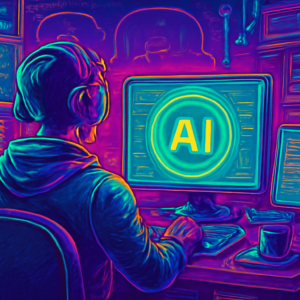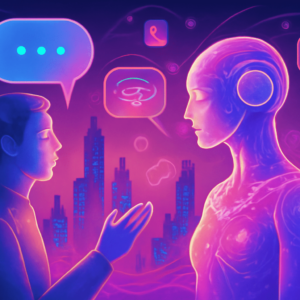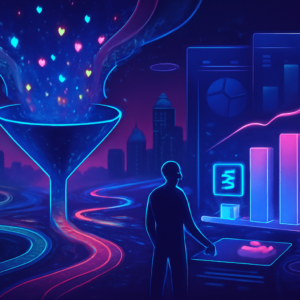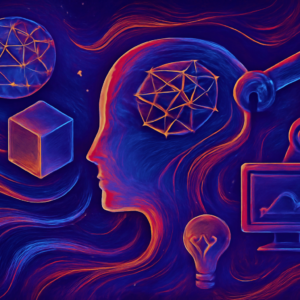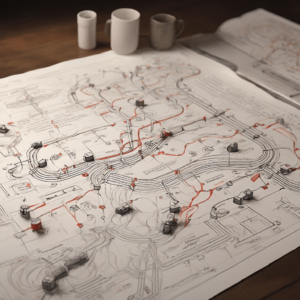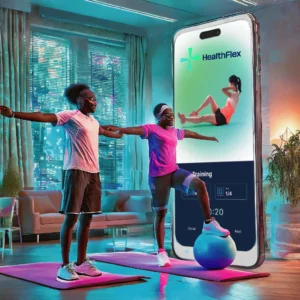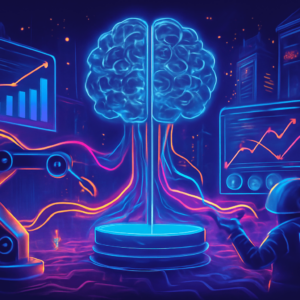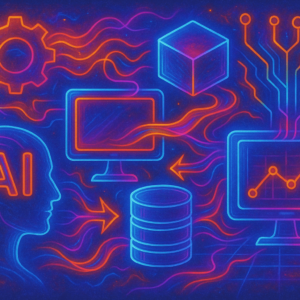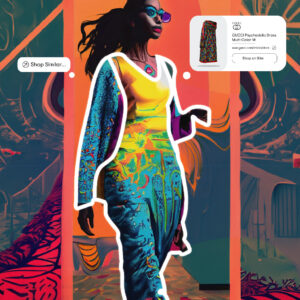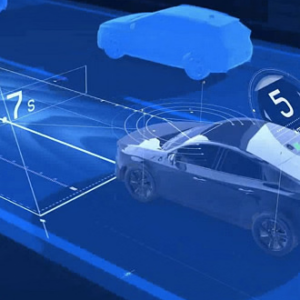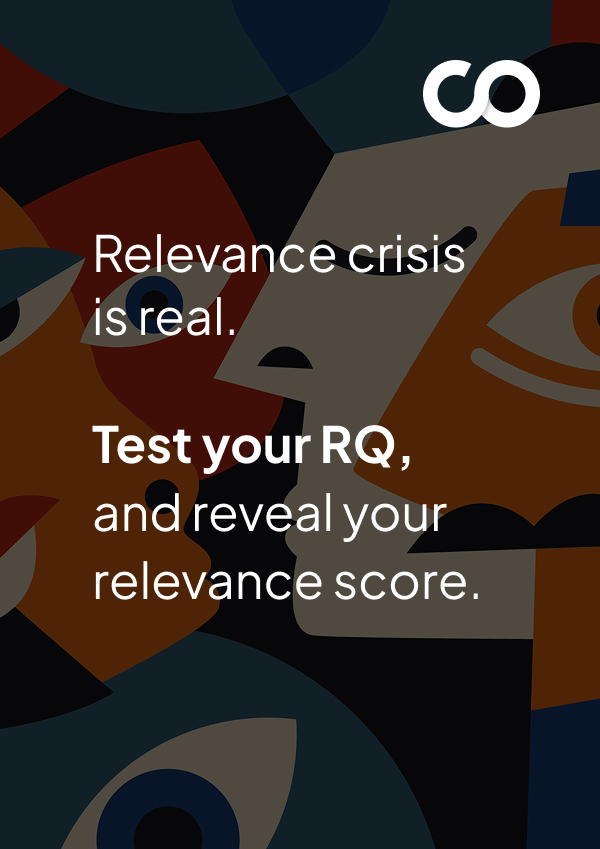CX and UX Transformation
Integrated CX And UX Design For Delight

Why CX + UX Integration Matters
Focusing only on customer experience (CX) or only on user experience (UX) creates gaps. CX ensures customers feel valued and engaged throughout their journey, while UX ensures every interaction with your digital product is intuitive and effortless. For true business transformation, you need both—because customers decide whether to buy, and users decide whether to stay.
Many large-scale businesses struggle on both fronts: customers encounter inconsistent experiences across touchpoints, while users face outdated UI, complicated user flows, and poor personalization. These lead to low adoption, poor retention, and missed revenue opportunities—while competitors win with delightful experiences and relevance.
At Codewave, we bridge this gap. Our CX + UX transformation strategy combines human-centered design thinking with AI, to create experiences that drive measurable results—higher engagement / conversions, reduced churn, and higher lifetime value. By integrating CX and UX, we help you maximize value for customers and deliver delight for users, ensuring both stay engaged and invested in your brand.
We begin by understanding the root cause of your challenges. Then, our approach to CX and UX transformation starts with understanding the unsaid needs of your customers & users, customer journey mapping and user journey mapping, sentiment analysis, voice of the customer analytics, and creating omnichannel consistency to create integrated experiences across all touchpoints.

30%
Boost in conversions
40%
Higher Customer Lifetime Value
40%
Increase in user engagement
Download The Master Guide For Building Delightful, Sticky Apps In 2025.
Build your app like a PRO. Nail everything from that first lightbulb moment to the first million.
Create Delightful, Valuable Journeys
User complaints are often left unresolved due to a lack of sentiment analysis and actionable insights. Without real-time feedback (such as user behavior tracking and analysis), businesses are unable to identify issues like slow website loading speeds or complex checkout processes leading to a decline in user satisfaction.
We centralize journey mapping (a process that visualizes the steps users take when interacting with your product or service). Furthermore, we use Voice of Customer (VoC) analytics (data collected from user feedback, surveys, social media, etc.), which provides insights into their experiences and expectations.
By integrating these insights, we address specific user friction points, refine personalization strategies, and improve product usability.
Benefits You Can Expect:
- Faster Issue Resolution: Real-time insights enable rapid response to complaints, decreasing user bounce rates and churn.
- Higher Satisfaction: Proactive improvements based on user feedback yield a 30% increase in conversion rates.
Example: For a subscription-based service, our VoC analytics will enable tracking of customer complaints in real-time, allowing for faster resolutions and improved retention.
Disjointed systems (CRM software not integrated with customer support tools) and fragmented tools (separate platforms for email marketing and customer feedback) lead to inefficiencies and data silos. This results in delayed responses, inconsistent customer service, and missed opportunities for engagement.
This lack of integration directly hinders operational effectiveness (e.g., difficulty in tracking customer issues across departments).
We connect your support, product, and design teams with shared data (a central dashboard that aggregates customer interactions from all touchpoints, for instance, Salesforce or Zendesk) for smooth collaboration.
Benefits You Can Expect:
- Enhanced Consistency: Cross-departmental alignment supports a unified user experience across touchpoints (providing the same response across email, live chat, and in-app messaging), resulting in a 45% increase in user engagement.
- Lower Response Times: Integrated tools reduce response times, improving customer support efficiency.
Example: For a fintech platform, integrating customer support and product data will enable real-time issue tracking (e.g., linking user complaints from customer support directly with product teams via a shared dashboard), thereby reducing service delays.
Fragmented personalization (such as personalized email offers not matching the user’s preferences or location) leads to disengaged users and lower conversion rates. When users encounter inconsistent or irrelevant content, they are less likely to stay. This further reduces retention and increases customer churn.
We utilize personalization engines, such as dynamic content delivery platforms like Optimizely or Dynamic Yield. We also ensure omnichannel consistency (through sending out the same personalized offers across web, mobile, and email) to create customized user experiences across all platforms.
Moreover, we integrate personalization at scale by using AI-driven algorithms to analyze user behavior and deliver custom recommendations or content in real-time.
Benefits You Can Expect:
- Increased Retention: Personalized experiences lead to higher user retention across platforms, ensuring a cohesive and engaging journey that keeps users coming back.
Example: Our personalization framework will enable an e-commerce business to recommend products based on user preferences across both web and mobile platforms, ensuring it reaches customers where they are most active.
Lack of accountability for platform issues (like customer support tickets being ignored) leads to repeated NPS drops (Net Promoter Score, an indicator of customer satisfaction and loyalty). Platform fixes are delayed, and negative experiences (like slow response times, poor performance, or broken features) continue to accumulate, further diminishing user trust.
We implement journey mapping and continuous feedback loops (like regularly analyzing user interactions through heatmaps, surveys, and in-app feedback to identify pain points).
Benefits You Can Expect:
- Improvement in NPS Scores: Teams become accountable for the issues assigned to them. This further helps to improve NPS scores.
- Proactive Issue Resolution: Early identification and implementation of fixes reduces negative feedback and user errors by 25%.
Example: Codewave’s journey mapping tools will allow a SaaS-based platform to identify and address recurring customer complaints during the onboarding process.
A reactive service model means waiting for customers to voice their concerns before taking action. This approach leads to user frustration (long wait times for support or unresolved issues), with customers often abandoning a product after multiple poor experiences.
Ultimately, it affects business growth (stagnant revenue, higher churn, or missed upsell opportunities) as loyal customers become disengaged and new users hesitate to sign up.
We integrate data-driven insights, such as analyzing user behavior through tools like Google Analytics or sentiment analysis on social media. We also incorporate human-centered design to enable businesses to shift from reactive service to proactive experience design (like providing real-time recommendations or automated support responses based on user behavior).
Benefits You Can Expect:
- Proactive Service: By anticipating user needs, you can expect 2x faster task completion times. This can further improve customer service, engagement rates, and hence brand loyalty.
Example: With our proactive service design, a digital banking platform will be able to anticipate common user questions about recent transactions or how to set up automatic bill payments, reducing support ticket volume.
Losing Customers & Users? Design For Delight & Value.
How CX and UX Drive Real Transformation Across Industries
| Industry | How Connecting CX and UX Can Help |
| Digital Product Development | Helps create intuitive experiences that meet user needs and expectations. This integration enables better feedback loops, faster iterations, and more effective prioritization, ultimately resulting in products that delight users. |
| Technology | Ensures that end-users have consistent, personalized interactions across all touchpoints. This collaboration enhances usability, improves satisfaction, and encourages more meaningful digital interactions, ultimately driving both customer loyalty and long-term product success. |
| Retail | Allows businesses to deliver a unified shopping experience, whether online or in-store. Personalized recommendations, optimized navigation, and smooth transaction flows enhance customer satisfaction. |
| Healthcare | Helps improve patient experience by simplifying appointment scheduling, navigation within portals, and access to critical health information. By focusing on both aspects, healthcare providers can enhance patient satisfaction and improve overall care outcomes. |
| Banking and Finance | Creates secure and personalized experiences across digital platforms like mobile banking, online transactions, or customer support. By aligning both, we reduce friction in account management, simplify loan applications, and enhance real-time support, all while ensuring compliance with regulations like PCI-DSS. |
| Education | Helps create digital learning environments that are accessible and engaging. A seamless experience between course platforms and communication channels improves student satisfaction, reduces dropout rates, and increases academic success. |
Turning Insights Into Value At Every Touchpoint
We start by analyzing your current customer experience (CX) and user experience (UX) to understand the unique challenges and opportunities. During this phase, we identify pain points such as slow website navigation or a confusing checkout process across your customer touchpoints (mobile apps, websites, and in-store interactions).
We also assess how your current designs and processes (user interface layout, product recommendations, and service workflows) align with user needs.
How It Works:
- Conducting user research and journey mapping to pinpoint critical friction points (like complex registration forms or confusing product descriptions) that hinder user flow and experience.
- Defining goals such as improving user engagement (e.g., increasing session duration or interactions per visit) or increasing customer retention rates (by reducing churn or enhancing repeat purchase frequency).
Outcome: Clear identification of gaps in your user journey, along with actionable insights to drive an actionable CX and UX strategy.
Once we understand your challenges, we develop a custom CX-UX strategy, ensuring a unified and engaging experience across touchpoints. Our design process focuses on simplifying navigation bars or implementing clear CTA buttons and personalized interactions.
We also focus on simplifying user flows (like minimizing the steps in the checkout process or providing real-time assistance through live chat).
How It Works:
- Designing user interfaces that align with customer journey maps (e.g., ensuring the layout and content of a product page match the user’s search intent)
- Utilizing human-centered design principles like conducting user interviews, empathy mapping, and usability testing to ensure the solution meets user needs by focusing on ease of use.
Outcome: A cohesive CX and UX strategy that offers users a smooth, frictionless experience (like seamless transitions between app screens, quick load times, or consistent navigation across platforms) across every interaction.
We integrate advanced personalization strategies and design solutions like dynamic content display based on user location or specific preferences. By utilizing data insights, we customize the experience for each user.
How It Works:
- Implementing personalization engines for dynamic content delivery (e.g., personalized product recommendations based on past purchases, browsing history, or user demographics)
- Using data-driven insights for UX/UI decisions (like adjusting CTA buttons based on user behavior or simplifying navigation for users who frequently access specific categories or features)
Outcome: Increased user engagement and conversion rates due to relevant experiences that resonate with each user.
To ensure consistent messaging and user experience across all platforms, we unify CX and UX strategies to create an omnichannel presence. This ensures that users receive the same high-quality experience, regardless of the medium through which they interact with your brand.
How It Works:
- Integrating customer feedback loops (like surveys, NPS scores, and social listening tools) to improve cross-channel experiences continuously
- Streamlining customer support and service features (like implementing a unified ticketing system) to maintain consistency
Outcome: A connected omnichannel experience that ensures smooth interactions across all touchpoints, enhancing customer satisfaction and boosting engagement. This consistency leads to stronger brand loyalty, increased retention rates, and a more personalized, relevant experience that keeps customers coming back.
Our work doesn’t end once the new CX and UX strategies are implemented. We continuously monitor user feedback by tracking user interactions, session durations, and click patterns to optimize designs, ensuring they evolve in line with user expectations and business objectives.
How It Works:
- Refining UX/UI designs based on continuous feedback
- A/B testing new features and design changes for optimal results
Outcome: Ongoing improvements to your CX and UX, ensuring your digital experiences remain engaging, efficient, and aligned with business goals, all while maintaining high customer satisfaction.
Essential Tech Stack for Integrating CX-UX
| Category | Tools/Technologies |
| CX and UX Integration | Omnichannel Personalization, User Journey Mapping, Behavioral Analytics, Real-Time Feedback Systems, Customer Segmentation Tools |
| User Experience Design | Wireframing, Prototyping, Figma, Sketch, Adobe XD, Usability Testing Tools, Interaction Design |
| Customer Experience Strategy | Voice of Customer Analytics, Journey Analytics, Customer Feedback Platforms, Sentiment Analysis, CX Optimization Tools |
| Personalization Engines | Optimizely, Dynamic Yield, Adobe Target, Custom AI-driven Recommendation Systems, Behavioral Targeting Tools |
| Experience Monitoring | Heatmaps, Session Recordings, A/B Testing, Google Analytics, FullStory, Hotjar |
| Cross-Channel Consistency | Unified Customer Service Platforms, Salesforce Service Cloud, Zendesk, Microsoft Dynamics 365, Omni-channel Communication Tools |
CX-UX Transformation in Action
Discover how businesses are driving growth by reimagining CX and UX. By creating personalized digital journeys and ensuring smooth omnichannel interactions, they drive measurable improvements in user engagement, retention, and satisfaction.
Explore our portfolio of success stories before getting started.
We transform companies!
Codewave is an award-winning company that transforms businesses by generating ideas, building products, and accelerating growth.
Frequently asked questions
Customers now expect seamless, personalized digital interactions. A significant 59% believe businesses must offer advanced digital experiences to maintain loyalty, and 37% abandon purchases after a poor digital experience.
Integrating AI enhances CX by enabling 24/7 support and personalized interactions. For instance, by 2025, 95% of customer interactions are projected to involve AI, streamlining support and boosting customer satisfaction.
Legacy systems and outdated processes hinder CX efforts. 34% of business leaders cite these as significant barriers, requiring substantial investment to modernize.
To achieve a customer-centric culture, businesses must focus on understanding customer needs, aligning strategies accordingly, allowing employees to prioritize customer satisfaction, and continuously monitoring and improving the overall customer experience.
The difference matters because CX involves all customer touchpoints with a brand, while UX focuses on product or content interactions. Poor UX can negatively impact overall CX, leading to lower retention rates. Businesses see a 9,900% ROI for investing in UX improvements.



